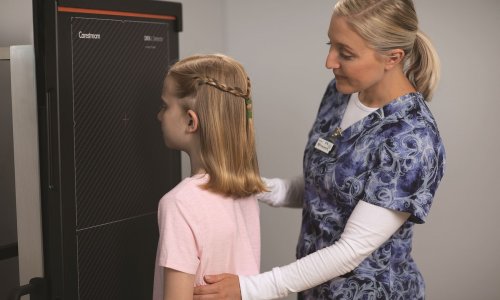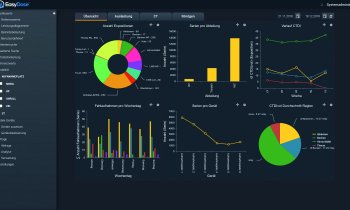Cloud computing
The storage and retrieval of an ever increasing volume of imaging data is raising hospital IT managers’ interest in sharing computing resources via the Internet, thus saving on storage space, hardware and software costs and concerns over data security. Mark Nicholls spoke with Saskia Groeneveld, Carestream’s Regional Marketing Manager (Healthcare Information Solutions), about the company’s expanding service in this area.

The concept of cloud computing is becoming attractive to hospitals – effectively letting an external organisation take care of the storage of images and ensuring they are available to whoever requires them, whenever needed.
Carestream, for example, is now a recognised provider of cloud computing services with a number of hospitals already making the switch to off-site, third party storage.
Saskia Groeneveld, Carestream’s Regional Marketing Manager (Healthcare Information Solutions), explains that, with Carestream Vue for Cloud Services, a hospital has a service access point which includes small storage area on-site for the most recent images, with all images stored in a secure off-site data centre. Therefore, if a hospital’s own information systems go down, imaging data will still be available to clinicians via an secured Internet link, ensuring continuity of care and constant and consistent access to data.
Carestream Vue Cloud Services consists of three elements:
• Vue Cloud Archive – offering vendor-neutral, virtualised remote long-term storage
• Vue Cloud PACS – providing radiologists and clinicians with a complete diagnostic workflow delivered by a cloud-based infrastructure on a pay-as-you-go basis
• Vue Cloud Community – enabling healthcare facilities to share images and information via a global work list, to consult on diagnoses and treatments, obtain second opinions and enable sub-specialty reading.
Although security is an obvious issue when data is stored in this way, Saskia Groeneveld points out that Carestream has secure access controls, robust audit tracking and security teams that ‘ensure the integral security of each data centre’.
The big advantage to a hospital of cloud computing is that it no longer has to invest in servers, hardware or software, she adds. ‘We take care of all of that. All hospitals have to worry about is sending out DICOM, or non-DICOM, images to the service access point, which then transfers them to the data centre for storage.’
An early adopter of Carestream Vue is the National Health Service (NHS) in Scotland. Carestream provides the national archive with all images stored in a data centre. Hospitals in The Netherlands, France and Germany are also using the system. ‘For these hospitals, the benefit of moving to cloud is that there is no infrastructure on site and no upfront investment,’ she explains. ‘By going to cloud, the customer has high flexibility in up or down staging volumes and cloud offers strong collaboration possibilities, more so than when data is kept within the hospital, facilitating image sharing with referring physicians who have the authorisation to access data.’
A new aspect of Carestream Vue Cloud Services, to be showcased at ECR (Work in Progress), will empower patients to view and share their own medical data with referring physicians through the My Vue patient portal - thus eliminating the need for patients to carry medical imaging exams to physicians on CDs, DVDs or X-ray film. ‘The patient can only give access to one person at a time and determine how long they are going to give access to data for in the cloud, and be selective about what they want to share,’ Saskia Groeneveld points out.
Carestream Vue is patient centric and agile in the way it can deal with data coming from different software by different manufacturers and eliminates ‘silos’ in hospitals. They can have different storage platforms for different modalities, but she adds, ‘we can centralise that in one clinical data archive’. Data protection Carestream has addressed the varying legal issues and protocols that exist in different countries for data storage, patient ID and consent regarding cloud computing.
‘Some countries require data residing in their own country but in other countries there is no problem storing data across borders. We have 10 data centres around the world and now manage over 40 million studies – and that’s one petabyte.’ Early indications from Carestream’s internal data and informal responses from early adopters suggest the cloud option is 30% cheaper than traditional on-site storage.
Feedback from users shows satisfaction with predictable costs and security arrangements, she points out. ‘With cloud computing they can now focus on their core business, which is healthcare, rather than on managing large IT systems.’
08.08.2012











